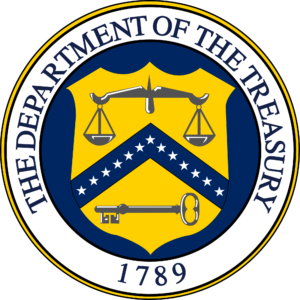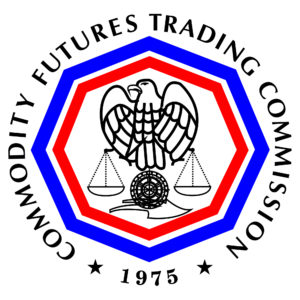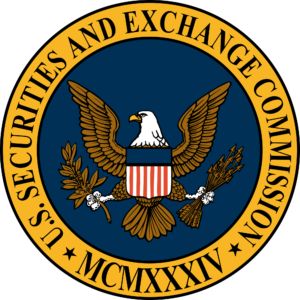Shortly after Trump became president, true to his campaign promises to “roll back regulation”, he issued an executive order for a review of the American Financial system, with some core principles around making regulation smarter and fostering growth, among others.
The US Treasury is responding to this order by providing 4 reports covering Banking, Capital Markets, Asset Management, and Nonbank financial institutions. In each report, they seem to detail the current landscape and make recommendations for improvement.
The Banking report came out in June, and last Friday October 6th, the US Treasury released the Capital Markets report.
The report is 232 pages long. So naturally after reading the executive summary, I jumped to the Derivatives section (a mere 42 pages).
General Comments
In general, what struck me about this document, is that it does a terribly good job of defining Capital Markets; the types of institutions and regulators, the history of these regulators and regulations, and then highlighting areas of contention.
 Of course you must remember that there is the threat of a “conservative” bias to the analysis, given that the key influencers (Secretary of the Treasury Mnuchin, Chief Economic Adviser Cohn, etc) are republican ex-bankers/hedge-funders. So when the report cites that the report is based on engagements with financial services firms, trade groups, academics, etc, you sort of picture this being Mnuchin calling up his hedge fund buddies for their opinions. That said, I found the report very fair.
Of course you must remember that there is the threat of a “conservative” bias to the analysis, given that the key influencers (Secretary of the Treasury Mnuchin, Chief Economic Adviser Cohn, etc) are republican ex-bankers/hedge-funders. So when the report cites that the report is based on engagements with financial services firms, trade groups, academics, etc, you sort of picture this being Mnuchin calling up his hedge fund buddies for their opinions. That said, I found the report very fair.
If you’ve heard me discuss US regulation of derivatives, under my typically narrow focus of CFTC-related Dodd-Frank regulation, I would summarize my assessment as:
- Clearing mandate is good.
- Trade reporting mandate (SDRs) is good.
- Execution mandate (SEFs) has some decent principles, but got sidetracked in regulation.
Largely, the Report corroborates this assessment which I was glad to see.
Of course there is more. We can’t forget capital requirements, nor the entire SEC obligations, among others.
So I dug through the Derivative section, and will try to summarize what the Treasury has said.
A Brief History
First, the brief history lesson of US derivatives regulation:
- The Chicago Board Of Trade was the first futures exchange, established in 1848!
- Chicago Mercantile Exchange formed in 1919.
- The first federal regulation of futures was the Grain Futures Act of 1922 which gave regulatory authority to the Commodity Exchange Authority.
- Back then, presumably because the economy was just a bunch of people exchanging livestock, all the instruments were agricultural, and hence the US Department of Agriculture oversaw this. Which explains why, to this day, the CFTC appropriations are doled out by the Agriculture committees in the House and Senate (House & Senate Ag Committee’s).
- The Commodity Exchange Act (CEA) was enacted in 1936, and remains the main piece of legislation that keeps getting amended (eg for Dodd-Frank in 2010)
- In 1974, the CEA was amended to form the CFTC.
- In 2000, among a booming OTC swaps market, the Commodity Futures Modernization Act (CFMA) was passed to explicitly prohibit the CFTC from regulating swaps!
- In 2010, after swaps were partly blamed for the financial crisis, there was a significant backtrack: the CEA was amended under Dodd-Frank to explicitly give the CFTC jurisdiction over (most) swaps. The SEC got authority over security-based swaps such as single name CDS.
- Mandatory reporting of swaps to SDRs was phased in, beginning in December 2012
- In 2013, the CFTC issued its first Clearing mandate and Execution mandate.
- In October 2013, SEF’s launched and handled “permitted” transactions.
- In February 2014, the first “required” transactions were traded on SEF
- In November 2015, the Banking regulators and CFTC finalized Uncleared Margin Rules
There will be a quiz at the end.
Issues and Recommendations
Like I mentioned before, the Treasury found general support for clearing and reporting mandates. They do however detail various recommendations. I will try to summarize as follows.
SEF Execution and MAT Process
If you’ve read our blogs since 2013, you’ll know much of the history of SEF’s (Swap Execution Facilities).
Basically, the CFTC deem some very liquid, standardized swaps as “required” or “MAT”. These swaps need to be traded on a SEF. These products become “MAT” when a SEF files a piece of paper with a list of proposed MAT swaps with the CFTC. There’s slightly more to it, but that’s the gist.
While Dodd-Frank intended for swaps to be traded on-SEF by “any means of interstate commerce”, the final rules stated that MAT Swaps need to be traded in an order book, or through a 3-way RFQ “RFQ-3” that ties into an order book.
Lastly, there was a famous footnote 88 in the preamble of the final SEF rule which basically said that any multiple-to-multiple (ie not single-dealer) platforms need to register as a SEF, regardless of whether they are transacting MAT products or not. This meant all Multi-Dealer FX portals needed to become SEFs.
The Treasury recommends:
- Allow SEF’s to use “any means of interstate commerce” for execution.
- Change the MAT process. They leave out details, but I believe because they know Chairman Giancarlo is already on the right track already.
- Clarify or eliminate footnote 88
Swap Data Reporting
 SDR reporting is the cornerstone of Dodd-Frank post-trade transparency, and one that we champion at Clarus, as the underlying source of our SDRView data.
SDR reporting is the cornerstone of Dodd-Frank post-trade transparency, and one that we champion at Clarus, as the underlying source of our SDRView data.
We’re all grownups here, so we can call a spade a spade. The data is not perfect, but we’re miles ahead of where we were. Just read any of our typical market reports or daily Market Briefings and you’ll quickly realize the value of the data being disseminated.
The Treasury report slaps the CFTC here a bit by pointing out:
- Participants have to submit lots of data (real time data, PET data, Confirmations, Snapshots, valuations) and this is a burden
- There are some data quality issues
- There is no harmonization between the US rules and other jurisdictions
Their recommendations are to complete the CFTC “Roadmap” they launched in June 2017 to:
- Standardize fields across products and SDRs
- Harmonize with foreign regulations
- Improve quality
CFTC & SEC Harmonization:
Generally speaking, the CFTC is commended for completing nearly all rulemaking, while the SEC are highlighted as not yet finalizing rules on security based swap clearing and SEF execution.
The Treasury highlights and recommends:
- Due to inconsistent or duplicative requirements for reporting, trading, clearing, capital and margin rules, they would like the CFTC and SEC to make a joint effort to harmonize rules
- The SEC needs to finish their rules
- Consider catering to alternative / substituted compliance – eg if you meet the CFTC rules, you don’t have to worry about SEC rules
 While not explicit, it seems implied that the term “mixed swap” (which might require both CFTC and SEC rule-following) should be eliminated/addressed.
While not explicit, it seems implied that the term “mixed swap” (which might require both CFTC and SEC rule-following) should be eliminated/addressed.
The report does not suggest a merging of the SEC and CFTC. But a layperson might wonder why. I suppose that would have been a bombshell.
Margin for Uncleared Swaps
I was surprised to learn (or be reminded) that the Banking regulators require margin on inter-affiliate trades, while the CFTC has exempted these trades. Of course that doesn’t help if you are a bank overseen by a banking regulator.
The recommendations, under the headline of making the US more competitive globally:
- Consider exempting affiliate transactions
- Consider scaling back from 10-day VaR (as cleared swaps are 5-day VaR). Hmm, I see that one as tough.
- Consider relaxing settlement from 1-day payments to T+2 or later (can be difficult to next-day settle with Asia from the US)
- Consider giving Financial End Users a break from these rules (as they claim too many are caught by it)
I sort of interpret all of these as: find the most lax regulatory implementation of the BCBS-IOSCO framework around the globe, and set that as the bar to reach, not surpass.
CFTC No-Action Letters
The Treasury suggests codifying all of these, in order to give some regulatory certainty. There quite a few. They cite 160 staff letters in 2014 alone! To be fair to the CFTC, they did get this all done before the rest of the world.
Cross Border Issues
I always struggle to follow this one. It relates to who has to follow the CFTC & SEC rules. There has been layers of guidance on this topic, culminating in 2013 when the CFTC issued a staff advisory that trade-level-requirements (clearing, execution, reporting) apply to swaps between non-US persons if some related/parent US entity personnel regularly arrange, negotiate, and execute (ANE) swaps. There has been a no-action relief on this one ever since.
Further, another piece of guidance has scared non-US swap platforms to such an extent that they refuse access to US persons, in order to avoid US regulatory requirements.
The Treasury recommends that the CFTC and SEC make their rules either compatible with non-US jurisdictions, or allow substituted compliance with foreign jurisdictions regulations.
It’s a tough one. It’s tough to see how you can accomplish this AND keep US on-shore firms competitive without making your rules the most lax of all foreign jurisdictions.
Capital Treatment in Support of Central Clearing
The Supplementary Leverage Ratio (SLR) is punitive. It unfairly imposes significant capital requirements on banks that hold customer margins. Further, the current exposure method (CEM) used to measure derivative exposures is excessive for products such as options where delta-equivalents are not allowed, and furthermore uses gross notionals, which does not cater for offsetting long/short positions.
SA-CCR has been proposed as a replacement for CEM but is delayed in the US, and still not perfect.
The Treasury then cites market participants complaining about the difficulty FCM’s have had in the US. I’m particularly fond of this section as it references a Clarus blog about FCM concentration.
Their recommendations are to:
- Remove client margins for cleared derivatives from SLR
- Treat options more appropriately (delta-based)
- Transition from CEM to a modified SA-CCR which allows for hedged positions
Swap Dealer De Minimis Threshold
If a US entity deals more than $8 billion notional of swaps over the past 12-months (the threshold), they need to register as a Swap Dealer. This is due to reduce to $3b in Dec 2018. Doing this would add another 58% more swap dealers, and capture a whopping 1% more notional activity.
Treasury’s recommendation: Keep it where it is.
Non-Financial Entities
It seems that too many firms have been caught by the clearing mandate. While Title VII uses the term non-financial entity, the CEA does not define that term. Oops!
The Treasury recommends the CFTC do some clarifying language to the CEA, within the spirit of the Dodd-Frank act which was to keep all the end users that had nothing to do with the financial crisis, out of it!
Position Limits
 Positions limits have a purpose – think “cornering a market”.
Positions limits have a purpose – think “cornering a market”.
The CFTC finalized Position Limit rules in 2011, but a lawsuit got in the way, primarily claiming that the CFTC failed to consider the cost/benefits of the rules.
The Treasury recommends the CFTC re-write it and consider:
- bona-fide hedging exemptions
- calibrate limits based up on how likely they are to be manipulated (eg only for front months)
- take a more holistic view of the denominator (eg set limits against the global market for gold, not just the US futures gold market)
Summary
In summary, the report is very good. If I was given 4 bullet points to summarize it, I would say:
- Prioritize US interests
- Align CFTC and SEC rules, and calibrate to international levels
- Relax Swap Execution rules
- Relax margin and capital
Finally, I know the CFTC have had lots of trouble getting more budget for the past 10 (or more!?) years. If I am Chairman Giancarlo, I’d hold up this 232 page document as an excuse for a big budget increase.
